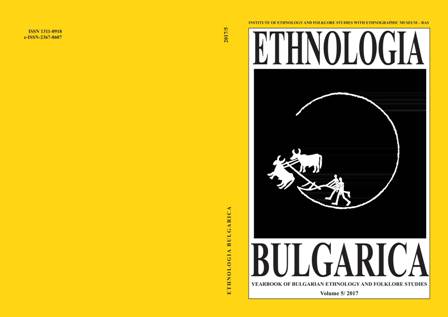National Character and Folklore in the Distorting Mirror
of Bulgarian Animated Cinema
National Character and Folklore in the Distorting Mirror
of Bulgarian Animated Cinema
Author(s): Nadezhda MarinchevskaSubject(s): Anthropology, Social Sciences, Cultural history, Customs / Folklore, Ethnohistory, History of ideas, Local History / Microhistory, Political history, Social history, Recent History (1900 till today), Cultural Anthropology / Ethnology, Culture and social structure , Film / Cinema / Cinematography, Sociology of Art
Published by: Институт за етнология и фолклористика с Етнографски музей при БАН
Keywords: cinema;Bulgarian culture;communism;
Summary/Abstract: The article examines various interpretations of folklore elements in Bulgarian animatedcinema as well as authors’ personal generalizations about main features of theBulgarian national character and ethos in the period from the late 1940s to these days.In the 1960s, the process, which has begun in the framework of ideological censorship,Bulgarian folklore tradition included, quickly transformed into satirical film model aiming its criticism at the Bulgarian national character. This model was based on the unconventional visual representation of folklore through the modern graphics and caricature, through the grotesque and decorative drawing. The next stage of the transformation of mythological and legendary subjects in the 1980s was related to radical neo-vanguard practices in Bulgarian animated cinema, which compared Bulgarian tradition to foreign cultures and ideas on a global scale and in a wide range– from the direct parallels in art to the psychoanalytical interpretations visualized insurrealistic stylistics.After the fall of the Berlin Wall in 1989, all aspects of Bulgarian culture experienced a crisis – institutional, financial, and artistic. One could expect that the abolishment of ideological sanctions would push artists to openly revive topics that were forbidden until then, to interpret plots from folklore that had been unacceptable until that moment, or at least would prompt a new understanding of the meaning of the national character, broadening the worldview from the 1980s. Unfortunately, nothing of the sort occurred.
Journal: ETHNOLOGIA BULGARICA. Yearbook of Bulgarian Ethnology and Folklore
- Issue Year: V/2017
- Issue No: 1
- Page Range: 44-61
- Page Count: 18
- Language: English
- Content File-PDF

